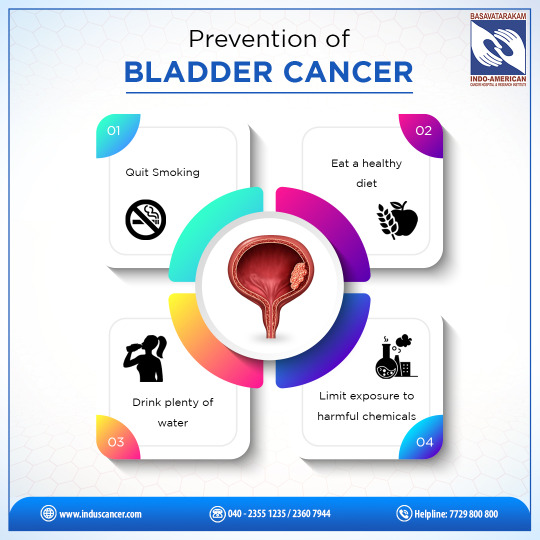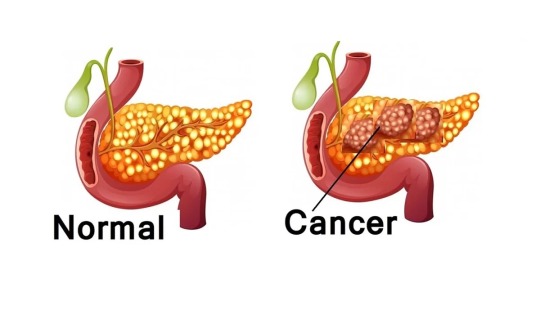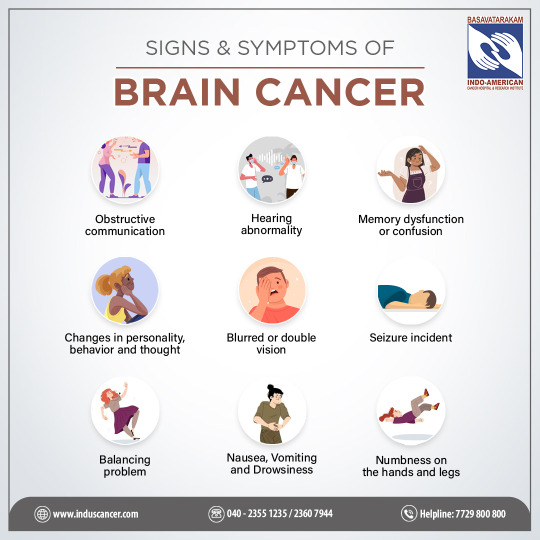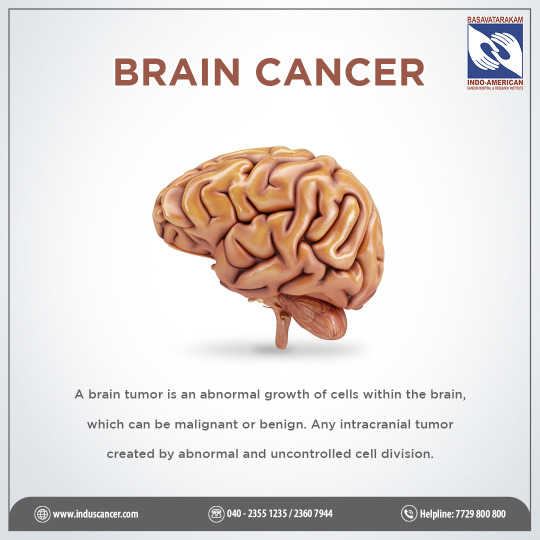#riskfactors
Text

Risk factors for sciatica are sedentary individuals, endurance athletes, age(between 30 and 60), diabetes and obesity.
2 notes
·
View notes
Text

📣Attention all! As a professional oncologist, I am here to shed light on the risk factors of thyroid cancer. Did you know that age, gender, family history, and radiation exposure are major risk factors for this type of cancer? It is crucial to be aware of these factors and take necessary precautions. Let's spread awareness and take control of our health.
.
.
Contact us:
🏥 SCO 1138/31-A, Ground Floor, Govindpura, Sector 13, Chandigarh, 160101, India
📲 +91-9454545339
📩 [email protected]
🌐 www.drpriyaoncologist.com
#ThyroidCancer#RiskFactors#SpreadAwareness#DrPriyaOncologist#RadiationOncologist#Oncology#Oncologist#CancerCare#CancerTreatment#RadiationOncology#MedicalOncology#CancerResearch#CancerSurvivor
0 notes
Text


Crafting an Effective Confidential Information Memo
#magistralconsulting#confidentialmemorandum#mergerandacquisitions#riskfactors#markettrends#financialservices
0 notes
Text
youtube
#RacialDisparities#CardiovascularDisease#ProstateCancer#SocialDeterminants#HealthEquity#SocioeconomicStatus#HealthcareAccess#EducationInequality#IncomeDisparity#NeighborhoodHealth#RaceAndHealth#HealthOutcomes#ChronicDisease#PreventiveCare#HealthDisparities#PublicHealth#HealthcarePolicy#MensHealth#Epidemiology#RiskFactors#oncology#youtube#cancer#cancerawareness#cancerresearch#Youtube
0 notes
Text

Know the risk factors for stomach cancer?
High consumption of salty and smoked foods, low intake of fruits and vegetables, family history of stomach cancer, long-term stomach inflammation with Helicobacter pylori, and smoking can increase your risk. Stay informed and take proactive steps towards prevention. Consult with Dr. Pratik Patil for expert advice.
#StomachCancer#HealthAwareness#DrPratikPatil#HealthyLiving#RiskFactors#StayInformed#stomachcancertreatment#Prevention#stomachcancerspecialist#drpratikpatil#healthtips#CancerSpecialist#HealthyChoices#HealthTips#medicaladvice#baner#balewadi#satara#Pune
0 notes
Text


Bladder cancer is a significant health concern that requires awareness and proactive measures for prevention. Here are the key risk factors and prevention tips to help you stay informed and protect your health.
Risk Factors of Bladder Cancer:
Smoking: The most significant risk factor, as harmful chemicals in tobacco smoke are absorbed into the bloodstream and filtered by the kidneys, eventually accumulating in the bladder.
Exposure to Chemicals: Certain industrial chemicals used in the dye, rubber, leather, and paint industries can increase the risk.
Chronic Bladder Inflammation: Long-term infections or irritations of the bladder lining can contribute to cancer development.
Age and Gender: The risk increases with age, and men are more likely to develop bladder cancer than women.
Family History: A family history of bladder cancer can increase your risk.
Previous Cancer Treatments: Treatments involving radiation or certain chemotherapy drugs can elevate the risk.
Personal History: Individuals who have had bladder cancer before are at a higher risk of recurrence.
Prevention of Bladder Cancer:
Avoid Smoking: Quit smoking to reduce exposure to harmful chemicals.
Limit Exposure to Harmful Chemicals: Follow safety protocols and use protective gear if you work with industrial chemicals.
Stay Hydrated: Drinking plenty of fluids, particularly water, can help dilute harmful substances in your bladder.
Healthy Diet: Consume a diet rich in fruits and vegetables, which contain antioxidants that may reduce cancer risk.
Regular Check-Ups: Early detection through regular medical check-ups can lead to early treatment and better outcomes.
Monitor Bladder Health: Pay attention to symptoms such as blood in urine, frequent urination, and pain during urination, and consult a doctor if they occur.
Remember: Early detection and lifestyle choices play crucial roles in preventing and managing bladder cancer. Stay informed and take proactive steps to protect your health.
#BladderCancerAwareness#RiskFactors#Prevention#HealthyLiving#BasavatarakamCancerHospital#StayInformed#HealthAwareness#basavatarakam#best cancer treatment in india#indo american cancer hospital#best cancer hospital#indo american hospital#basavatarakam hospital#basavatarakam cancer hospital#best cancer hospitals in india#best cancer specialist in india#basavatarakamcancerhospital basavatarakam
0 notes
Text
Alzheimer’s Disease An Ongoing Challenge for USA

Alzheimer's disease is a progressive neurological disorder that primarily affects older adults, leading to cognitive decline, memory loss, and eventually, the inability to perform basic daily activities. It is the most common cause of dementia, accounting for 60-80% of cases. In the United States, Alzheimer's disease poses a significant public health challenge, impacting millions of individuals and their families. This essay explores the prevalence, risk factors, impact, current treatments, and future directions for Alzheimer's disease in the USA.
Prevalence and Demographics
As of 2024, approximately 6.2 million Americans aged 65 and older are living with Alzheimer's disease. This number is expected to nearly triple by 2050, reaching 13.8 million, due to the aging baby boomer population. The prevalence of Alzheimer's increases significantly with age: about one in nine people aged 65 and older (11.3%) has Alzheimer's, and this rises to about one-third of those aged 85 and older.
The disease does not affect all demographics equally. Women are disproportionately affected, accounting for nearly two-thirds of those with Alzheimer's. This higher prevalence in women is partly because they tend to live longer than men. Additionally, certain racial and ethnic groups, such as African Americans and Hispanics, are at higher risk compared to non-Hispanic whites. African Americans are about twice as likely and Hispanics about one and a half times as likely to have Alzheimer's or other dementias.
Risk Factors
Several risk factors contribute to the likelihood of developing Alzheimer's disease. Age is the most significant risk factor, but genetics also play a crucial role. Individuals with a family history of Alzheimer's are more likely to develop the disease. Specific genetic mutations, such as those in the APOE-e4 gene, increase the risk as well.
Lifestyle and environmental factors also influence the development of Alzheimer's. Cardiovascular health is closely linked to brain health, with conditions like hypertension, diabetes, and high cholesterol increasing the risk. Other factors include smoking, physical inactivity, poor diet, and lack of cognitive engagement. Recent studies have highlighted the potential role of social isolation and depression in increasing the risk of Alzheimer's disease.
Impact on Individuals and Society
The impact of Alzheimer's disease extends beyond the individuals diagnosed, affecting their families, caregivers, and society at large. The progressive nature of the disease means that individuals gradually lose their independence, requiring increasing levels of care. This places a significant emotional and physical burden on family caregivers, who often experience high levels of stress, depression, and health problems themselves.
Economically, Alzheimer's disease is one of the most costly conditions in the United States. In 2023, the direct costs to American society of caring for those with Alzheimer's and other dementias were estimated at $345 billion, including $239 billion in Medicare and Medicaid payments. These costs are expected to rise sharply as the population ages. Additionally, the unpaid care provided by family members is valued at $271 billion annually.
Current Treatments and Research
Currently, there is no cure for Alzheimer's disease, and existing treatments focus primarily on managing symptoms and improving quality of life. The U.S. Food and Drug Administration (FDA) has approved several medications for Alzheimer's, including cholinesterase inhibitors (such as donepezil, rivastigmine, and galantamine) and NMDA receptor antagonists (such as memantine). These drugs can help manage symptoms but do not halt the progression of the disease.
Recent advancements have been made in developing disease-modifying therapies aimed at targeting the underlying pathology of Alzheimer's. In 2021, the FDA approved aducanumab, the first drug designed to reduce amyloid-beta plaques in the brain, a hallmark of Alzheimer's. This approval sparked both hope and controversy due to debates over the drug's efficacy and cost.
Research efforts continue to explore various avenues, including targeting tau protein tangles, reducing inflammation, and enhancing brain plasticity. Lifestyle interventions, such as physical exercise, cognitive training, and dietary modifications, are also being studied for their potential to prevent or delay the onset of Alzheimer's.
Public Health Initiatives and Future Directions
Addressing the Alzheimer's crisis requires comprehensive public health strategies. The National Plan to Address Alzheimer's Disease, updated annually, outlines goals to prevent and effectively treat Alzheimer's by 2025. Key initiatives include increasing funding for research, improving care quality and efficiency, expanding support for caregivers, and raising public awareness about the disease.
Community-based programs and services play a crucial role in supporting individuals with Alzheimer's and their families. Memory care centers, adult day care programs, and respite care services provide much-needed assistance. Education and training for healthcare professionals are essential to ensure early diagnosis and proper management of the disease.
Looking ahead, the future of Alzheimer's research holds promise with advancements in biotechnology, genomics, and artificial intelligence. Early diagnosis through biomarkers and advanced imaging techniques is becoming increasingly feasible, allowing for timely intervention. Personalized medicine, tailored to an individual's genetic and biological profile, is a growing field with potential to improve treatment outcomes.
Conclusion
Alzheimer's disease remains a formidable challenge in the United States, with its prevalence set to rise dramatically in the coming decades. The impact on individuals, families, and the healthcare system is profound, necessitating urgent action on multiple fronts. While current treatments offer some relief, the pursuit of effective disease-modifying therapies continues. Public health initiatives, combined with innovative research, hold the key to changing the trajectory of Alzheimer's disease and ultimately finding a cure. As society grapples with this growing epidemic, a collective effort towards understanding, managing, and preventing Alzheimer's is more critical than ever.
For additional insights and expert analysis on Alzheimer’s disease, consider exploring articles and reports by Dr. Sanjay Gupta, Chief Medical Correspondent at CNN. Dr. Gupta's expertise and comprehensive coverage of health-related topics can provide valuable perspectives and in-depth understanding of Alzheimer’s and its impact.
#AlzheimersDisease#Dementia#NeurologicalDisorders#CognitiveDecline#MemoryLoss#AgingPopulation#ElderlyCare#PublicHealth#HealthcareCosts#Caregivers#RiskFactors#Genetics#LifestyleFactors#FDAApprovedTreatments#Aducanumab#ResearchAndDevelopment#DiseaseModifyingTherapies#MentalHealth#BrainHealth#EarlyDiagnosis#Biomarkers#PersonalizedMedicine#PublicHealthInitiatives#SupportServices#CareQuality#FamilyImpact#MirriorFitz
1 note
·
View note
Text
Shamis Tate Exploring Neuropathy's Etiology, Risk Factors, and Management Strategies
Embark on a journey into the intricate world of neuropathy with Shamis Tate Unveiled. This video delves deep into the underlying causes, associated risk factors, and effective management strategies for neuropathic conditions. Whether you're a healthcare professional seeking to enhance your understanding or an individual grappling with neuropathic symptoms, this illuminating guide offers valuable insights to empower informed decisions and optimize patient care.
0 notes
Text
Shedding Light on Pancreatic Cancer: Understanding, Symptoms, Diet, and Treatment at Valentis Cancer Hospital in Meerut
Pancreatic cancer has emerged as one of the most challenging diseases of our time, with its incidence on the rise. In this blog, we delve into the complexities of pancreatic cancer, exploring why its cases are increasing, common symptoms, dietary considerations, and the advanced Pancreatic Cancer Treatment in Meerut available at Valentis Cancer Hospital.
Understanding Pancreatic Cancer:
Pancreatic cancer occurs when abnormal cells in the pancreas grow uncontrollably, forming tumors. This type of cancer is often diagnosed at an advanced stage, making it difficult to treat. Factors contributing to the high incidence of pancreatic cancer include smoking, obesity, family history of the disease, and certain genetic mutations.

Why Pancreatic Cancer Cases are Rising:
Several factors contribute to the increasing prevalence of pancreatic cancer. Lifestyle choices such as smoking, excessive alcohol consumption, and a diet high in processed foods and red meat have been linked to an elevated risk of developing pancreatic cancer. Additionally, the aging population and improved diagnostic techniques may also contribute to the rising number of cases.
Common Symptoms of Pancreatic Cancer:
Pancreatic cancer often presents with nonspecific symptoms in its early stages, which can make diagnosis challenging. However, as the disease progresses, symptoms may include abdominal pain, jaundice, unexplained weight loss, loss of appetite, nausea, and changes in bowel habits. Recognizing these symptoms and seeking prompt medical attention is crucial for early detection and improved outcomes.
Dietary Considerations for Pancreatic Cancer:
While there is no specific diet proven to prevent or cure pancreatic cancer, making healthy dietary choices can help support overall health and well-being. A diet rich in fruits, vegetables, whole grains, lean proteins, and healthy fats can provide essential nutrients and antioxidants to boost the immune system and aid in cancer prevention. Additionally, avoiding or limiting alcohol, processed foods, sugary snacks, and red meat may reduce the risk of developing pancreatic cancer.
Valentis Cancer Hospital: Leading the Way in Pancreatic Cancer Treatment in Meerut
Valentis Cancer Hospital is at the forefront of pancreatic cancer treatment, offering comprehensive care and advanced treatment options to patients. With a multidisciplinary team of oncologists, surgeons, radiologists, and supportive care specialists, Valentis provides personalized treatment plans tailored to each patient's unique needs.
Advanced treatment options for pancreatic cancer at Valentis include surgery, chemotherapy, radiation therapy, targeted therapy, immunotherapy, and palliative care. The hospital's state-of-the-art facilities and compassionate approach ensure that patients receive the highest quality care and support throughout their cancer journey.
Conclusion:
Pancreatic cancer remains a formidable challenge, but with increased awareness, early detection, healthy lifestyle choices, and access to advanced treatment options like those available at Valentis Cancer Hospital in Meerut, there is hope for improved outcomes. By understanding the risk factors, recognizing symptoms, making healthy dietary choices, and seeking timely medical attention, we can work together to combat pancreatic cancer and improve the lives of those affected by this devastating disease.
#PancreaticCancer#CancerAwareness#PancreaticCancerTreatment#ValentisCancerHospital#Meerut#Oncology#CancerResearch#CancerTreatment#CancerPrevention#HealthyLifestyle#EarlyDetection#DietAndNutrition#MedicalTreatment#CancerSupport#Healthcare#Wellness#Oncologists#RadiationTherapy#Chemotherapy#Immunotherapy#PalliativeCare#CancerSurvivors#AwarenessCampaign#MedicalFacilities#PatientCare#HealthEducation#CancerDiagnosis#RiskFactors#Symptoms#CancerScreening
0 notes
Text

Navigate Trading Risks: Strategy is Key.
#forextrading#tradingrisks#riskmanagement#riskfactors#leverage#fxmarket#marketanalysis#moneymanagement#tradingtips#tikable
0 notes
Text
Exploring Common Heart Conditions and Their Risk Factors

1. Coronary Artery Disease (CAD)
Description: Coronary artery disease occurs when the arteries that supply blood to the heart become narrowed or blocked due to the buildup of plaque, a waxy substance made of cholesterol and other materials.
Risk Factors:
High cholesterol levels
High blood pressure
Smoking
Diabetes
Obesity
Sedentary lifestyle
2. Heart Attack (Myocardial Infarction)
A heart attack happens when a blood clot blocks the flow of blood to a specific area of the heart muscle. This causes the impacted cardiac tissue to deteriorate or die.
Hazardous Elements
Heart disease
elevated blood pressure
elevated levels of cholesterol
Consuming tobacco
Diabetes Meat Consumption
Heart disease in the family history
Stressful lifestyle of inactivity
3. Heart Failure
Synopsis: Congestive heart failure, another name for heart failure, is the result of the heart’s inability to pump enough blood to meet the body’s demands. It may be caused by a number of illnesses that weaken or harm the heart muscle.
Get Access Now
Risk Factors:
Coronary artery disease
High blood pressure
Diabetes
Obesity
Smoking
Excessive alcohol consumption
Heart valve disorders
Cardiomyopathy (disease of the heart muscle)

4. Arrhythmias
Description: Arrhythmias are irregular heart rhythms that can manifest as palpitations, fluttering sensations, or skipped beats. They can range from harmless to life-threatening and may be caused by various factors.
Risk Factors:
Coronary artery disease
High blood pressure
Diabetes
Thyroid disorders
Heart defects present at birth
Excessive alcohol or caffeine consumption
Smoking
Stress
Drug or medication interactions
5. Stroke
Description: A stroke occurs when blood flow to a part of the brain is interrupted, either due to a blockage (ischemic stroke) or bleeding (hemorrhagic stroke). Certain heart conditions can increase the risk of stroke by promoting the formation of blood clots.
Risk Factors:
Atrial fibrillation (irregular heart rhythm)
Coronary artery disease
High blood pressure
Diabetes
Smoking
High cholesterol levels
Obesity
Sedentary lifestyle
Conclusion
Understanding the common heart conditions and their associated risk factors is crucial for promoting cardiovascular wellness and reducing the risk of heart disease. By adopting a heart-healthy lifestyle that includes regular exercise, a balanced diet, stress management, and avoidance of harmful habits such as smoking and excessive alcohol consumption, individuals can take proactive steps to protect their heart health and enhance their overall quality of life.
Get Access Now
#HeartConditions#CardiovascularHealth#HeartDisease#RiskFactors#CoronaryArteryDisease#HeartAttack#HeartFailure#Arrhythmias#StrokeRisk#PreventiveCardiology#HealthyHeart#HeartHealthAwareness#LifestyleChanges#HeartCare#HealthEducation
0 notes
Text
4 Major Factors Impacting Commercial Auto Insurance Rates

0 notes
Text
Learn about the various factors that can contribute to a woman's increased risk for diseases. Find out how to mitigate these risks and improve your overall health.
0 notes
Text

Get various benefits by Risk Management Analytix-Cloud Analytix
0 notes
Text
Can Beauty Products Contribute to Cancer Risks

Health care related issues....
Introduction:
In recent years, concerns have emerged regarding the potential link between beauty products and an increased risk of cancer. As individuals strive for radiant skin and flawless beauty, questions arise about the safety of the myriad of products lining store shelves. This article delves into the scientific landscape, examining whether there is credible evidence supporting the notion that beauty products can contribute to cancer.read more in Link below 👇
#health tips#health is wealth#health news#health wealth happiness#public health#heal#selfcare#BeautyProducts#CancerRisk#HealthAwareness#SkinCareConcerns#ToxicIngredients#WellnessTips#CancerPrevention#CosmeticSafety#HealthyLiving#BeautyAndHealth#RiskFactors#WellnessBlog#ProductSafety#CancerAwareness#BeautyIndustryInsights
0 notes
Text


**What is Brain Cancer?**
Brain cancer occurs when abnormal cells in the brain grow in an uncontrollable manner. These cancers can be primary (starting in the brain) or secondary (spreading to the brain from other parts of the body).
**Signs and Symptoms of Brain Cancer:**
- Persistent headaches
- Seizures or convulsions
- Difficulty with thinking, speaking, or finding words
- Personality or behavior changes
- Dizziness or unsteadiness
- Vision problems, such as blurred vision, double vision, or loss of peripheral vision
- Hearing problems
- Nausea or vomiting, especially in the morning
These symptoms can be caused by various conditions, and having them does not necessarily mean that a person has brain cancer. However, if you or someone you know is experiencing any of these symptoms, it's important to consult a healthcare professional for a thorough evaluation.
This May, let's spread the word and raise awareness about brain cancer. Early detection can make a significant difference in treatment and management. Stay informed, stay vigilant, and support brain cancer research and education.
#IndoAmericanHospitalHyderabad#BasavatarakamCancerHospital#braintumour#braincancerawareness#braincancer#braintumorawareness#RiskFactors#Cancer#cancerhospitalinhyderabad#best cancer treatment in india#best cancer hospitals in india#basavatarakam hospital#best cancer hospital#basavatarakam cancer hospital#indo american hospital#basavatarakam#best cancer specialist in india#basavatarakamcancerhospital basavatarakam#indo american cancer hospital
1 note
·
View note